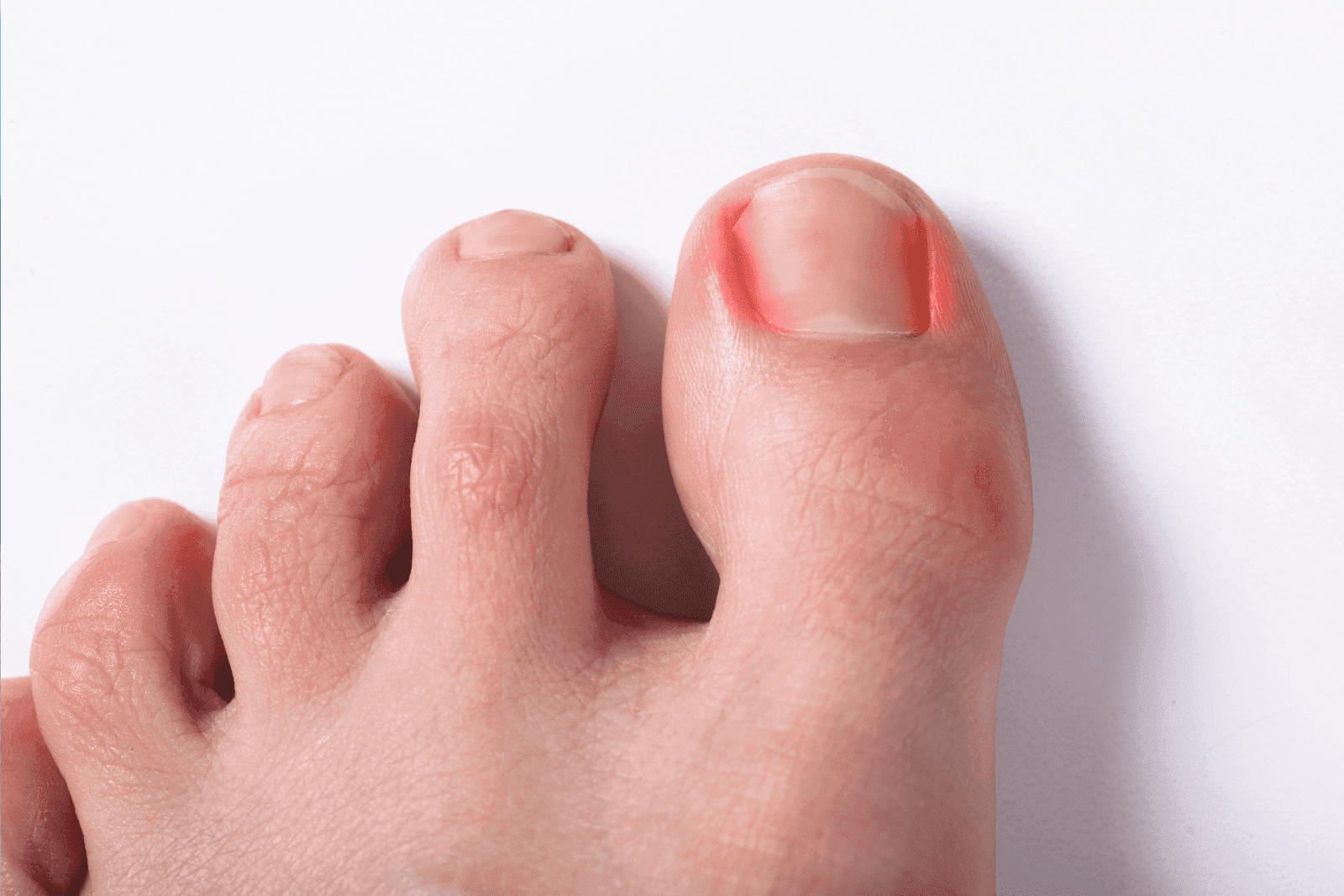Why Are My Toes Turning Red?
Noticing your toes turning red can be both surprising and concerning. Redness in the toes may be a sign of a variety of underlying conditions, ranging from harmless to more [...]
Read More
Medically reviewed by Alan Lucks | MD, Alan Lucks MDPC Private Practice - New York on October 13th, 2025.
Noticing your toes turning red can be both surprising and concerning. Redness in the toes may be a sign of a variety of underlying conditions, ranging from harmless to more serious health issues. Understanding why this happens is important so you can decide when to seek medical advice and how to manage the symptoms effectively.
 Common Causes of Red Toes
Common Causes of Red ToesRedness in the toes can result from several factors, including environmental triggers, infections, circulatory problems, or inflammatory conditions. Below are some of the most frequent causes to consider.
One of the most common reasons for red toes is poor circulation. Conditions such as peripheral artery disease (PAD) or Raynaud’s phenomenon affect blood flow to the extremities. In Raynaud’s, toes may initially turn white or blue due to restricted blood flow and then red as circulation returns, often accompanied by a burning sensation or pain.
Another circulatory cause is erythromelalgia, a rare disorder characterized by episodes of burning pain, warmth, and redness in the toes and feet. This condition can be triggered by heat or exercise and may require medical management. Patients often report that the discomfort can be exacerbated by certain activities or even by wearing socks, making it crucial to find appropriate footwear that minimizes irritation.
Infections such as cellulitis, a bacterial skin infection, can cause redness, swelling, and warmth in the toes. Fungal infections like athlete’s foot may also lead to redness, itching, and peeling skin. Prompt treatment is necessary to prevent complications. Additionally, ingrown toenails can lead to localized infections, resulting in redness and tenderness around the affected area. Maintaining proper foot hygiene and seeking timely medical advice can help mitigate these risks and promote faster healing.
Inflammatory diseases such as gout or rheumatoid arthritis can cause redness, swelling, and pain in the toes. Gout results from the buildup of uric acid crystals in joints, often affecting the big toe. Rheumatoid arthritis is an autoimmune condition that can inflame joints throughout the body, including the toes. In both cases, lifestyle factors such as diet and stress management can play a significant role in managing symptoms. For instance, reducing purine-rich foods can help lower uric acid levels in gout sufferers, while anti-inflammatory diets may benefit those with rheumatoid arthritis.
Exposure to cold weather, tight footwear, or prolonged standing can lead to redness and discomfort in the toes. Chilblains, for example, are painful red or purple bumps caused by repeated exposure to cold but not freezing temperatures. Wearing ill-fitting shoes can also irritate the skin and cause redness. Moreover, individuals who spend long hours on their feet, such as healthcare workers or retail employees, may notice increased redness and swelling due to the pressure and lack of circulation. Incorporating regular breaks and elevating the feet can help alleviate some of these symptoms, promoting better blood flow and reducing discomfort.
While some causes of red toes are minor and resolve on their own, others require prompt medical attention. It is important to recognize warning signs that indicate a more serious problem.
Severe pain or swelling in the toes
Redness spreading rapidly or accompanied by fever
Open sores, ulcers, or signs of infection
Persistent color changes or numbness
History of diabetes or circulatory problems
If you experience any of these symptoms, it is advisable to seek medical care promptly. Early diagnosis and treatment can prevent complications and improve outcomes. For instance, untreated infections can lead to more significant health issues, including systemic infections that may require hospitalization. Additionally, individuals with underlying health conditions, such as diabetes, must be particularly vigilant, as they may be at higher risk for complications stemming from seemingly minor issues.
If you notice your toes turning red and want to understand the cause without delay, telehealth services offer a convenient option. Doctronic.ai provides access to AI-powered medical consultations and licensed doctors 24/7 from the comfort of your home. Doctronic’s AI doctor synthesizes the latest peer-reviewed medical research to provide fast, accurate answers and treatment recommendations, helping you decide the best next steps for your health. This can be particularly beneficial for those who may have difficulty accessing traditional healthcare services due to mobility issues or geographic barriers. Furthermore, telehealth consultations can often be completed in a matter of minutes, allowing you to receive guidance on whether your symptoms require in-person evaluation or if they can be managed at home with simple interventions.
Diagnosing the cause of red toes involves a thorough evaluation of your symptoms, medical history, and sometimes diagnostic tests.
Your healthcare provider will ask about the onset, duration, and triggers of the redness. They will inquire about any associated symptoms such as pain, swelling, numbness, or systemic signs like fever. A physical exam will assess the skin, temperature, pulses, and joint condition.
Depending on the suspected cause, tests may include blood work to check for infection, inflammation, or uric acid levels. Imaging studies like ultrasound or X-rays can evaluate blood flow or joint abnormalities. In some cases, skin biopsies may be necessary.
Innovative AI tools, such as those offered by Doctronic.ai, assist in synthesizing complex medical data quickly. This technology supports both patients and clinicians by providing evidence-based insights and helping to prioritize urgent cases, ensuring timely and personalized care.
Treatment depends on the underlying cause of the redness. Here are common approaches based on different diagnoses.
For conditions like Raynaud’s phenomenon, lifestyle modifications such as keeping warm, avoiding triggers, and stress management are key. Medications may be prescribed to improve blood flow in severe cases. Erythromelalgia treatment focuses on symptom relief and avoiding heat exposure.
Bacterial infections require antibiotics, while fungal infections are treated with antifungal creams or oral medications. Early intervention is crucial to prevent the spread of infection.
Gout is managed with medications to reduce uric acid and inflammation, alongside dietary changes. Rheumatoid arthritis treatment includes disease-modifying drugs and physical therapy to control symptoms and prevent joint damage.
Protecting feet from cold, wearing properly fitting shoes, and taking breaks from prolonged standing can reduce redness and discomfort. Moisturizers and topical treatments may help with skin irritation.
Maintaining foot health is essential to prevent redness and other issues. Here are practical tips to keep your toes healthy and comfortable.
Wear Comfortable Shoes: Choose footwear that fits well and provides adequate support to avoid pressure and irritation.
Keep Feet Warm: Protect your feet from cold weather with warm socks and insulated shoes.
Practice Good Hygiene: Wash and dry your feet thoroughly to prevent infections.
Stay Active: Regular exercise promotes healthy circulation.
Monitor Foot Changes: Check your feet regularly for any redness, swelling, or sores, especially if you have diabetes or circulatory issues.
Telehealth has become an invaluable resource for quick, accessible medical care. If you notice your toes turning red and want to understand the cause or get treatment advice, telehealth platforms like Doctronic.ai offer a reliable solution.
Doctronic.ai combines advanced AI with licensed doctors to provide personalized, evidence-based care anytime, anywhere. With over 10 million users and rapid growth, it is revolutionizing how people access primary care. Whether you need a quick diagnosis, treatment recommendations, or a second opinion, Doctronic’s AI doctor is available 24/7 for under $40 per video visit, making healthcare more affordable and convenient than ever.
 Red Toes: Causes and When to Seek Medical Help
Red Toes: Causes and When to Seek Medical HelpRed toes can result from a variety of causes, from simple environmental effects to serious medical conditions. Understanding the potential reasons and knowing when to seek care is crucial for maintaining foot health and overall well-being. With advances in telehealth and AI-powered services like Doctronic.ai, getting fast, accurate, and personalized medical advice is easier than ever. If you are concerned about redness in your toes, consider using Doctronic.ai to get expert guidance without leaving your home.
If redness in your toes is causing you concern, don't wait for answers. Doctronic, the #1 AI Doctor, offers you a revolutionary approach to healthcare. Our AI-powered platform provides free, immediate medical advice, synthesizing the latest peer-reviewed research to address your symptoms. For a more personal touch, our telehealth video visits connect you with real doctors 24/7 in all 50 states, all for less than $40. Join over 10 million satisfied users who have experienced the smarter, faster, and more personal medical care that Doctronic provides. Skip the line. Talk to an AI Doctor Now, for free.
Sudden onset with fever and spreading requires same-day medical attention, while gradual changes may indicate chronic circulation issues that need systematic evaluation. Early intervention prevents serious complications, especially in high-risk individuals. If you're experiencing persistent or concerning symptoms, Doctronic can provide personalized guidance to help determine your next steps.
Noticing your toes turning red can be both surprising and concerning. Redness in the toes may be a sign of a variety of underlying conditions, ranging from harmless to more [...]
Read More